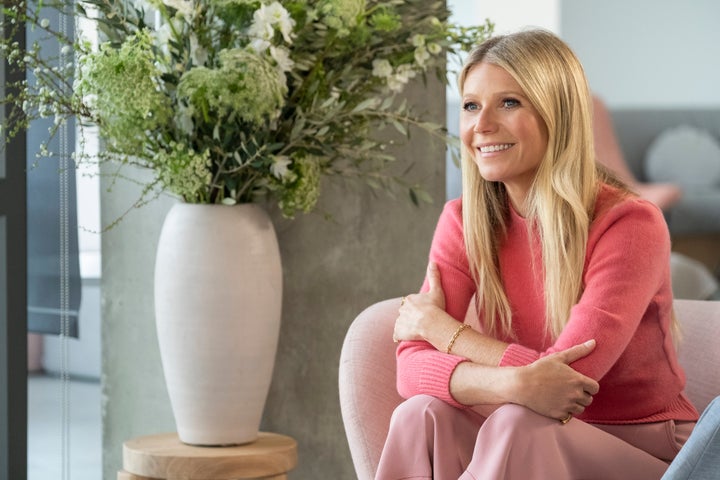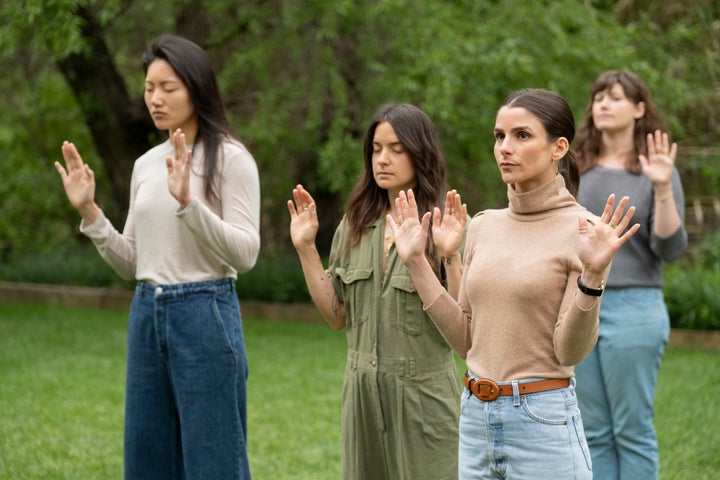We’ve watched all six episodes of The Goop Lab, so naturally, there are minor spoilers ahead.
“The following series is designed to entertain and inform not provide medical advice.” The waiver that appears at the start of every episode of The Goop Lab is telling – Netflix is fully aware of Goop’s controversial past. Gwyneth Paltrow’s lifestyle brand has a history of purporting dubious wellness advice and the announcement of the series didn’t escape critics.
A trailer, released earlier this month, led for calls for the show to be cancelled before anyone had even seen it, as well as an impressive effort to get #PoopLab trending. So it’s partial relief, partial perverse disappointment I feel when the first episode isn’t the cuckoo free-for-all I’d imagined.
Each 35-minute episode looks at the research surrounding a certain topic – ageing or orgasms, for example – before Goop staff take part in a mini “experiment” related to the subject under discussion.

Episode one is an exploration into the emerging world of psychedelic therapy. We meet academics who talk through the latest research, we watch as the Goop staff take magic mushrooms under the watch of trained therapists, and we hear from amazing case studies, like Jon, who took part in a peer-reviewed study investigating psychotherapy under the influence of MDMA, and shares the life-changing impact it’s had on his PTSD.
It wasn’t until a couple of hours later, when I’m pondering the show, that I realise I – a journalist who writes about health every day – have fallen for it.
I’ve been Gooped.
The episode doesn’t flag any opposing research urging caution about psychedelics. One tearful Goop employee declares she feels like she’s experienced “five years of therapy in about five hours” after taking mushrooms, but we’re told nothing about her aftercare, the long-term impact, or the risks of looking for a quick fix to deal with trauma.
We’re told taking psychedelics socially is very different from taking them in a clinical setting, but in the next breath, Paltrow admits once taking MDMA in Mexico. The undertone? “It’s no big deal.”
In the season intro, Paltrow claims she’ll be giving viewers “a much deeper dive into some of these topics” – the problem is, the show doesn’t go deep enough. Paltrow’s team scratch the surface, while excluding any naysayers from the table. We’re only shown one view: the Goop view.
As the series continues, the lines between science and pseudoscience become increasingly blurred and the oxymoronic title, The Goop Lab, becomes all the more fitting.
Scientists with recognised qualifications appear alongside seemingly self-declared experts. Fact is presented alongside personal theory or opinion. Paltrow is no longer overtly selling us bonkers products that are easy to dismiss.
Gone are the references to Yoni Eggs, “inner beauty powder”, vagina candles and bank-breaking crystals. This time, Goop’s messaging is more insidious – and often, convincing. Without a critical eye, it’s easy to start nodding along.

As the series continues, I’m reminded of gynaecologist Jen Gunter’s critique that wellness brands like Goop profit from “faux-feminism” – they think they’re doing a good job, while also promoting a patriarchal message. You see, episode three is all about female pleasure: we see vulvas, hear discussions on shame and watch what a woman’s orgasm really looks like. I’m about to chant “Gwyn for president!” when episode four brings me crashing back down to earth.
The team has turned their attention to ageing. Paltrow shares an empowering message about feeling a sense of “freedom” after hitting 40, and the women gather around to have a frank conversation about the pressures placed on women to stay youthful – in a world that values our appearance above all else.
Then what do they go and do? Stick needles into their faces and embark on crazy diets in an attempt to look and feel younger.
Sure it’s entertaining – who doesn’t want to see Gwyneth Paltrow looking like a red balloon after a vampire facial? – but the laughs are short-lived.
One particularly troubling segment shows the actor embark on a “diet” that supposedly mimics the results of fasting in an attempt curb age-related disease. For five days, she survives on tiny sachets of food, flippantly saying she feels “weak”, before repeating aspirational, non-scientific phrases such as “detox” and “cleanse”.
I’m reminded of Goop’s previous recommendation that women should aim to be their “leanest liveable weight”. The fact that her 14-year-old daughter, Apple, is in the background, commenting on her mum’s calorie intake that day, makes it all the more concerning.
Episode five and six – focusing on energy and psychics respectively – follow a similar pattern.
Watch The Goop Lab for entertainment, but remember to keep your wits about you – that waiver needs repeating every 10 minutes. With a team of recognised scientists by her side, Paltrow’s agenda is more convincing than ever – and that’s what makes it so terrifying.
The Goop Lab is on Netflix from 24 January.
